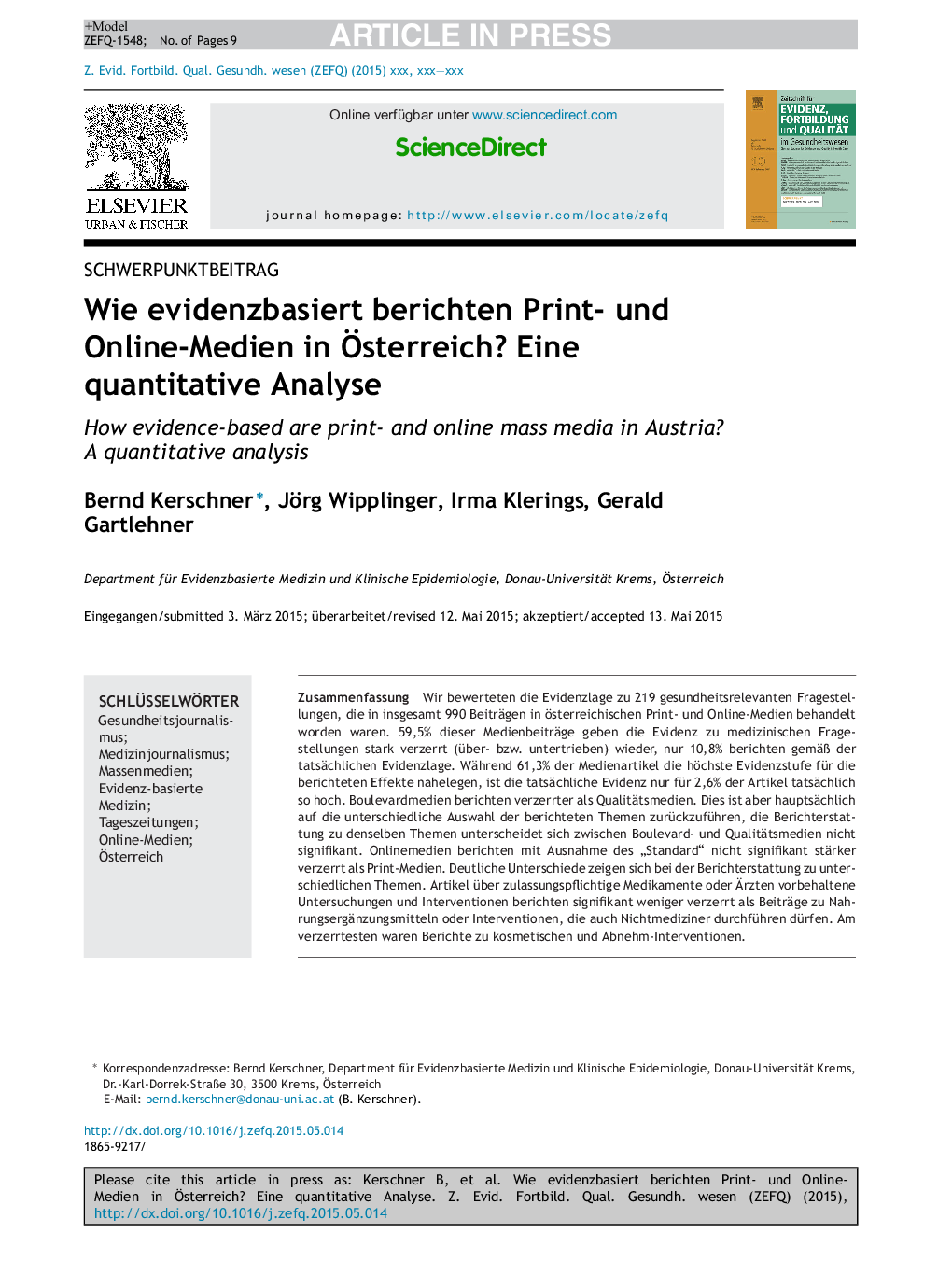| Article ID | Journal | Published Year | Pages | File Type |
|---|---|---|---|---|
| 7530179 | Zeitschrift für Evidenz, Fortbildung und Qualität im Gesundheitswesen | 2015 | 9 Pages |
Abstract
We rated the body of evidence for 219 health-related questions that had been covered by 990 media articles in Austrian print and online media. In 59.5Â % of these articles, the evidence for medical facts is reported in a highly distorted (exaggerated or understated) manner; only 10.8Â % adequately reflect the actual strength of evidence. While 61.3% of the articles imply that the reported effects are based on the highest level of evidence, it really only applies to 2.6% of the articles. Compared to quality media, tabloid media report in a more distorted way. However, this is mainly due to a different subject coverage, since the degree of distorted reporting does not significantly differ for subjects covered by both tabloid and quality media. Online media do not report in a more distorted way than print media, with the exception of the newspaper “Der Standard”. A clear difference can be seen in the reporting on different subjects. Articles on medications regulated by governmental authorities or interventions which only physicians are allowed to perform were significantly less distorted than articles on nutritional supplements or interventions that may be provided by non-physician staff. Reports on cosmetic or weight loss interventions were most distorted.
Keywords
Related Topics
Health Sciences
Medicine and Dentistry
Public Health and Health Policy
Authors
Bernd Kerschner, Jörg Wipplinger, Irma Klerings, Gerald Gartlehner,
